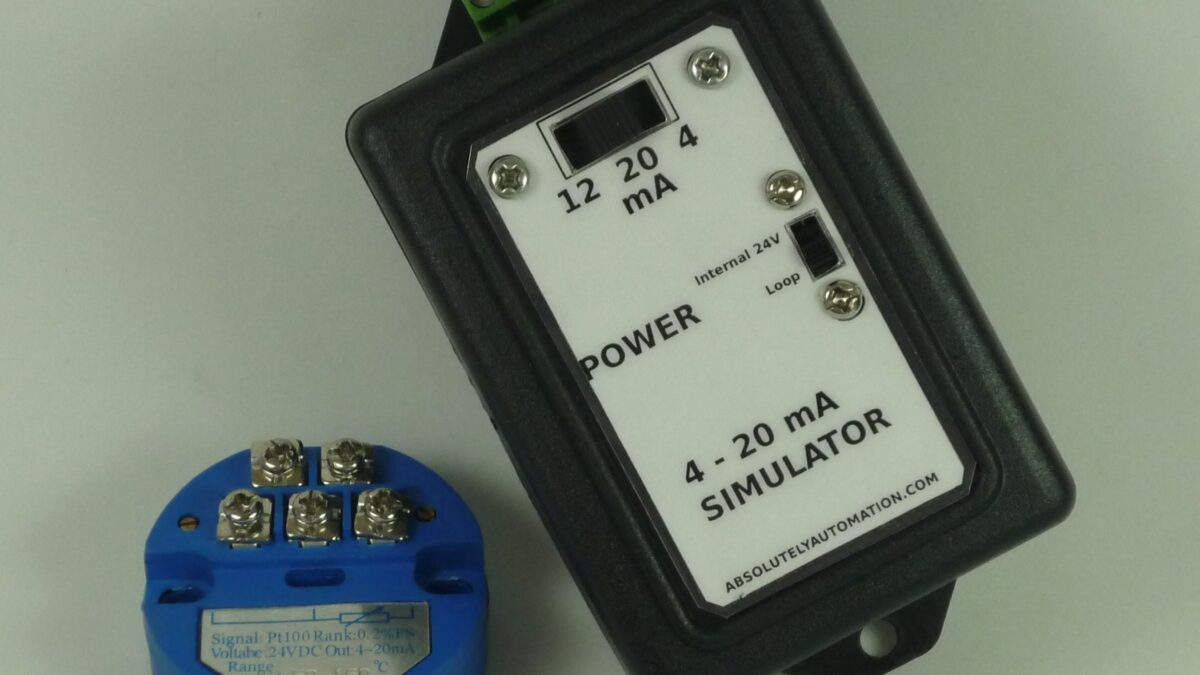A Temperature Transmitter is an electrical device that transmits temperature data across two wires to the processing unit. The transmitter is in charge of converting the temperature sensor’s little electrical signal into a signal that the processing unit can understand. A programmable logic controller (PLC) or a receiver are frequently used to receive the signal. If you’re using thermocouples, resistance temperature detectors (RTDs), or thermal resistors and wish to convert their micro-signals to the industry standard 4-20mA, you’ll need a transmitter. Transmitters and transducers are commonly referred to as the same item due to their similar definitions. Transmitters’ physical construction allows them to receive and deliver a diverse set of inputs and outputs. They require a voltage source and, depending on the application, exist in a number of physical configurations.
Using a Temperature Transmitter
A temperature transmitter draws current from a DC power source that is proportionate to its sensor input. The genuine signal is transmitted as a change in the power source’s current. A thermocouple input transmitter will require 4 mA of electricity from a DC power supply when monitoring the process’s lowest temperature. As the temperature rises, the thermocouple transmitter will need proportionally greater current until it reaches 20 mA. This 20 mA signal corresponds to the thermocouple’s highest recorded temperature. The transmitter’s internal signal-conditioning circuitry determines the temperature range that the output current signal will represent
In a series circuit, the temperature transmitter output signal is connected to the remote power supply and process equipment using only two copper wires. This is possible because the signal and power supply lines are combined where one circuit serves both the functions
Advantages of a Temperature Transmitter
As we have discussed above, a temperature transmitter has a wide variety of usage and applications in different industries as it has a lot of advantages. We will discuss some of its advantages in brief.
No requirement of AC power at the remote location
No extra power is required at the remote location since transmitters are powered by a low-level 4-20 mA output current signal. Additionally, in factories with a lot of equipment, the conventional 24 Vdc signal is required for operation.
For two-wire transmitter users, electrical noise and signal deterioration are not an issue.
The current output signal of the transmitter has a high immunity to electrical noise in the environment. The receiving device’s common-mode rejection generally eliminates any noise that does emerge in the output current. Furthermore, unlike most voltage signals, the current output signal does not fluctuate (diminishes) with distance.
Cost of wires drop extensively when using transmitters
When thermocouples emit low voltage signals, shielded cable is nearly always required when they are delivered over a long distance. Ambient electrical noise from arcing electrical relays, motors, and ac power lines may wreak havoc on signals sent via unshielded cable. Furthermore, in applications requiring lengthy cable lengths, costly, thick gauge wire is frequently employed (since it reduces errors from signal voltage drops caused by line resistance).
In a two-wire transmitter system, ordinary copper wire may be used to link all of the necessary components. Even over a tiny diameter wire, the 4-20 mA current output signal is remarkably resistant to ambient electrical noise and is not weakened by long distance transmission. When a temperature transmitter is added to a system, it removes the need for long stretches of expensive wire and a lot of shielding.
Features of a Temperature Transmitter
The reason for the extensive usage and applications of temperature transmitters is because they have a lot of amazing features. Transmitters use the same wiring for power and output, resulting in a two-wire output. A dc power supply is connected in series with the load resistance, and the current drawn from the supply is a 4-20 mA or output signal proportional to the input signal. Two-wire transmission allows the transmitter to be mounted further away from the sensor, reducing the impact of noise and signal deterioration on low-level sensor outputs.
Environmental protection and screw terminal input and output connections are provided by a sturdy aluminium shell suited for field mounting. This enclosure can be installed on the surface or on a regular relay track. Although there are new types that are linearized to the actual temperature, most temperature transmitters are linearized to the voltage signal provided by the thermocouple or RTD.
The thermocouple or RTD signal is converted to a 4-20 mA output signal by the temperature transmitters. Some types can be converted to RS-232C. Dip switches for numerous thermocouple types per model, as well as thermocouple and RTD selection on a single model, are offered on transmitters. RTD or thermocouple transmitters come in isolating or non-isolating types, and they provide output ranging adjustments with zero and span adjustments spanning 80 to 100 percent of the sensor range (depending on model).
How to choose the right temperature transmitter?
There are various ways of choosing and selecting the right temperature transmitter for your needs and this can be done by keeping in mind the below points
- The functionality of the transmitter needs to be understood first to select the right transmitter for you. Place where the transmitter has to be mounted, the type of environment for its functions etc play a very important role.
- You must choose the right inputs depending on whether you’re using a thermocouple or an RTD. This is determined by the sensor you’re using. The type of thermocouple and RTD you want to use should be determined by the temperature range and accuracy.
- You should be able to establish which sort of outputs should be delivered from the transmitters by looking at your programmable logic controller (PLC) or data acquisition device.
- The power supply is something you’ll have to choose for yourself based on the rest of your system’s components. It makes sense to utilise 12VDC as your power supply if your electronics operate at that voltage.
- Find a supplier who is able to meet all your expectations and demands.


